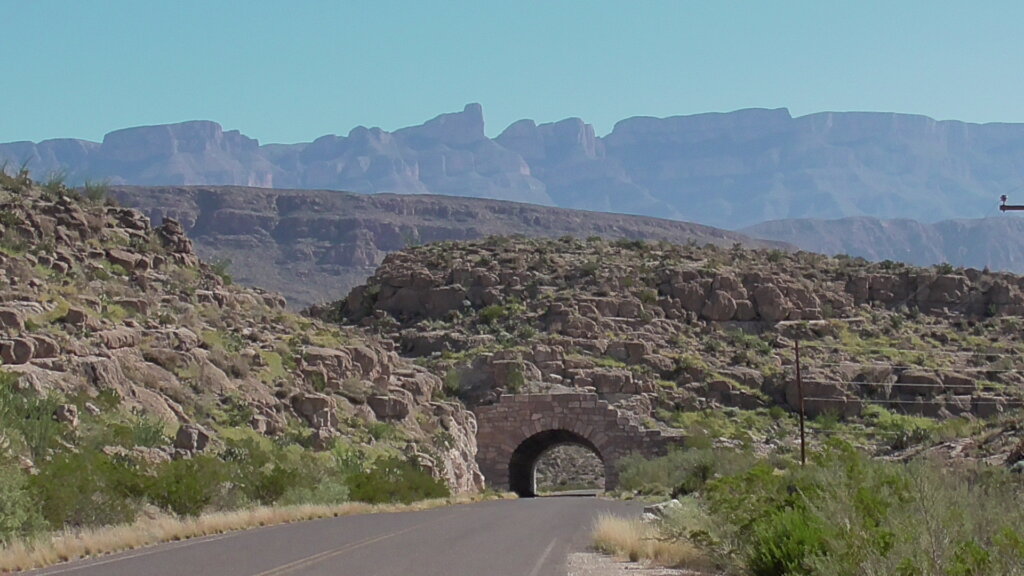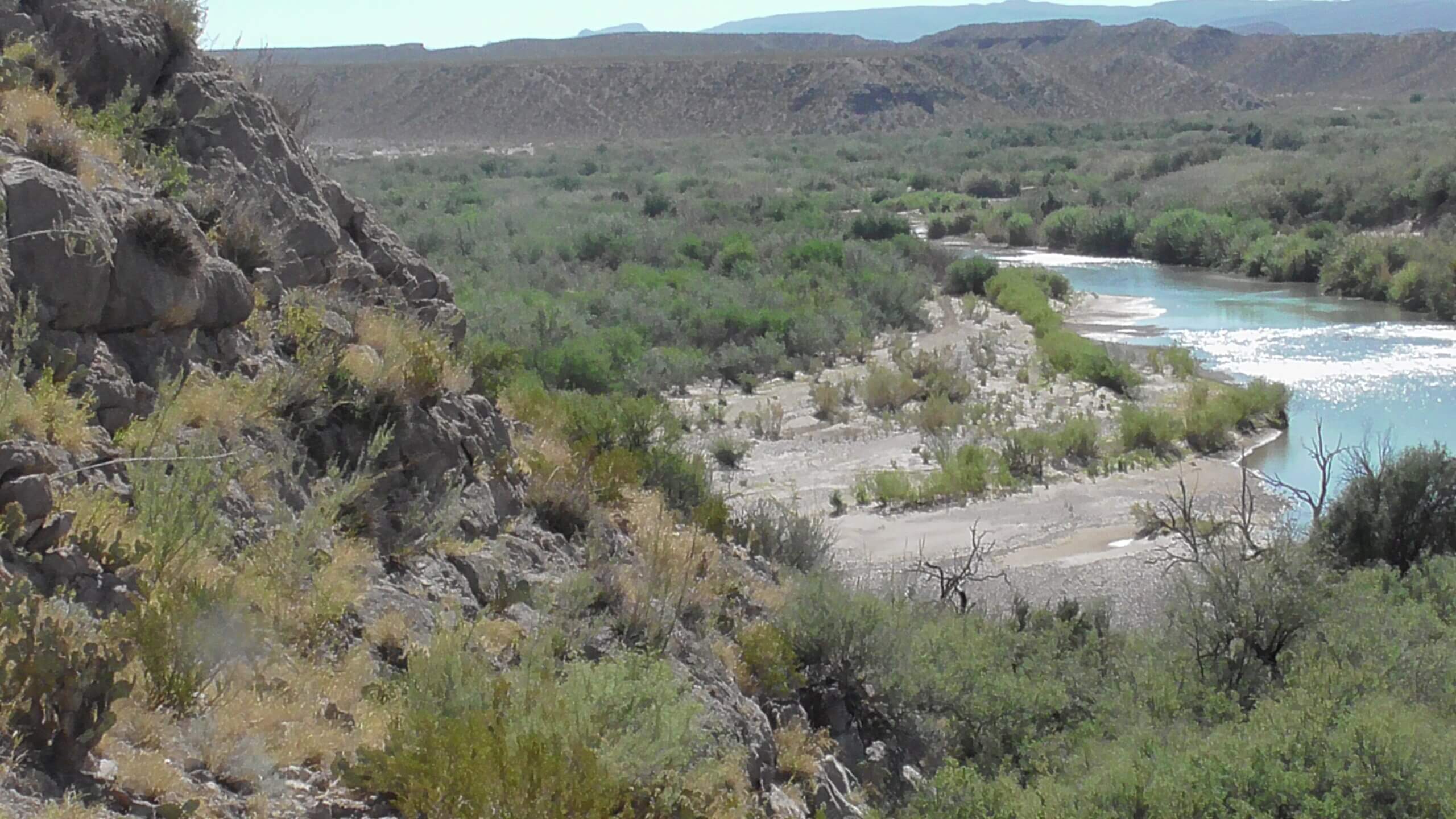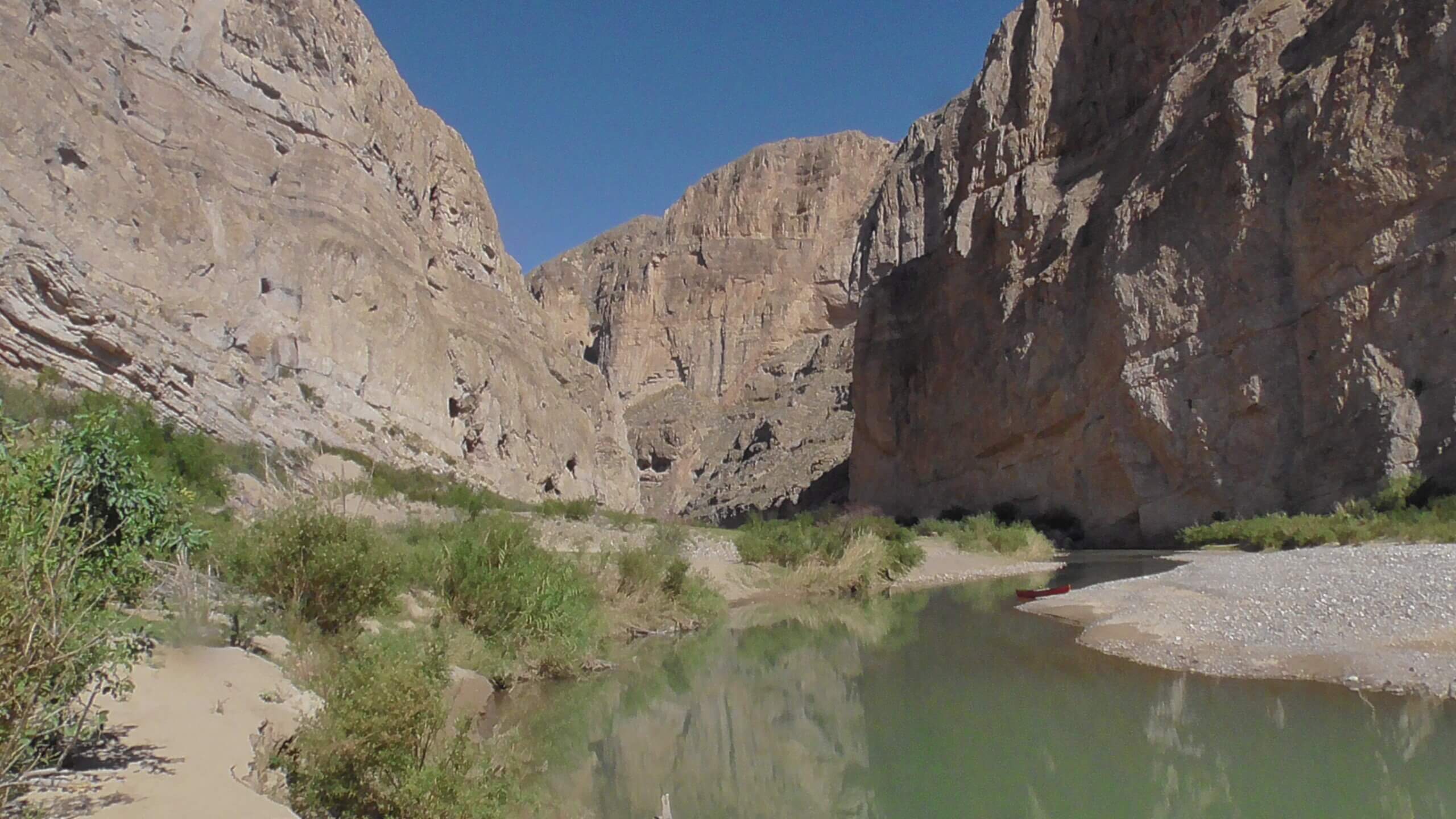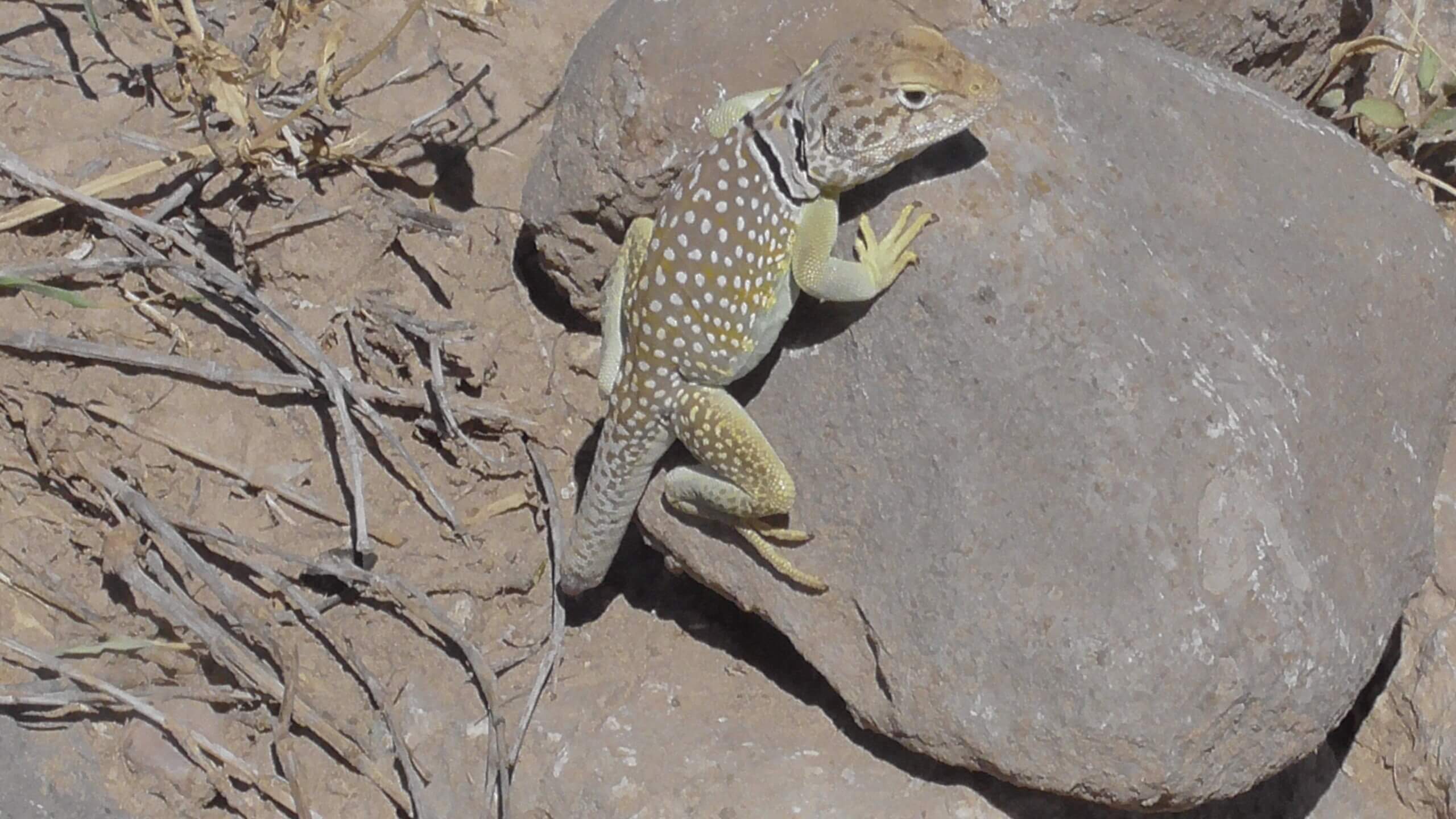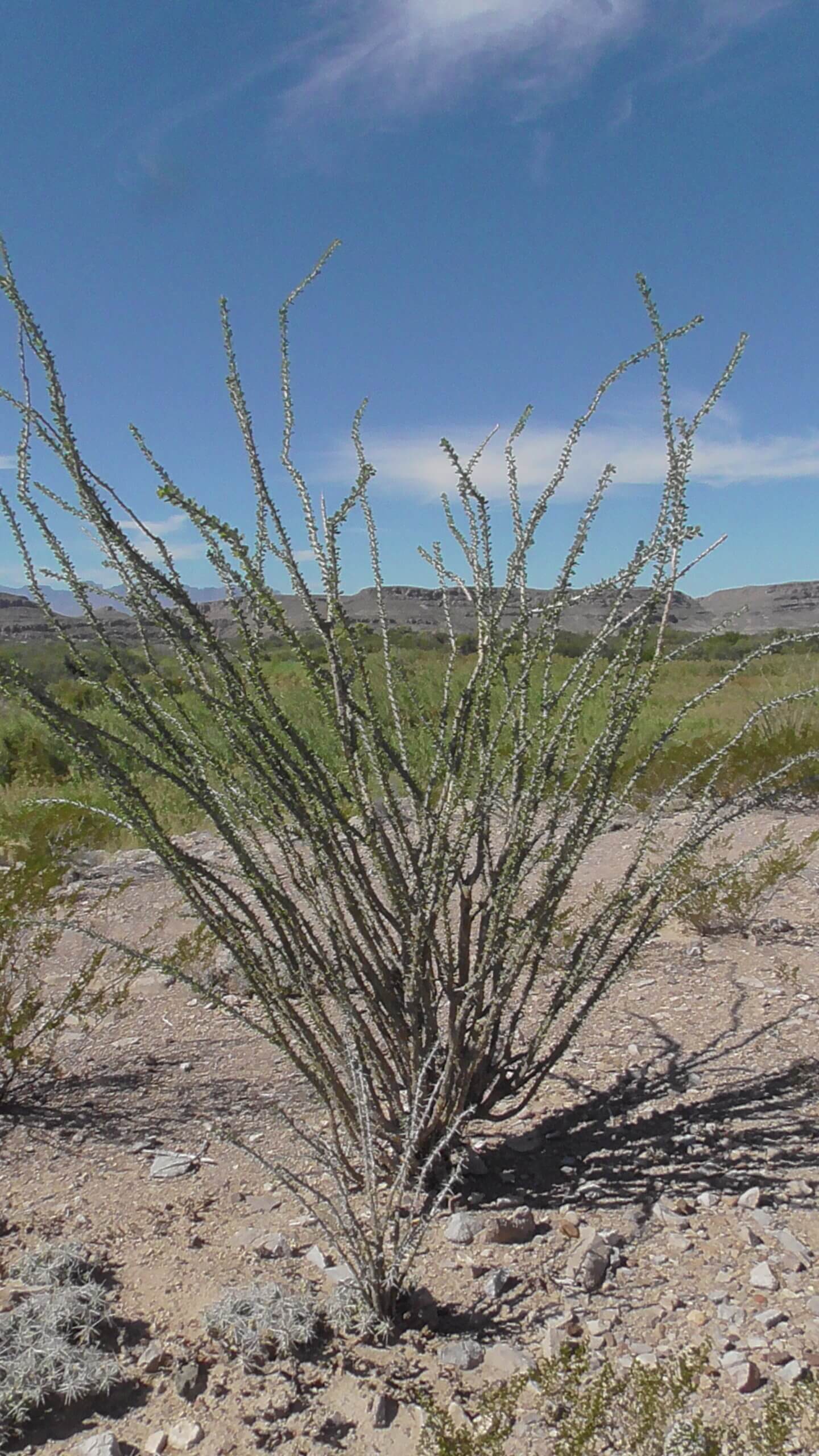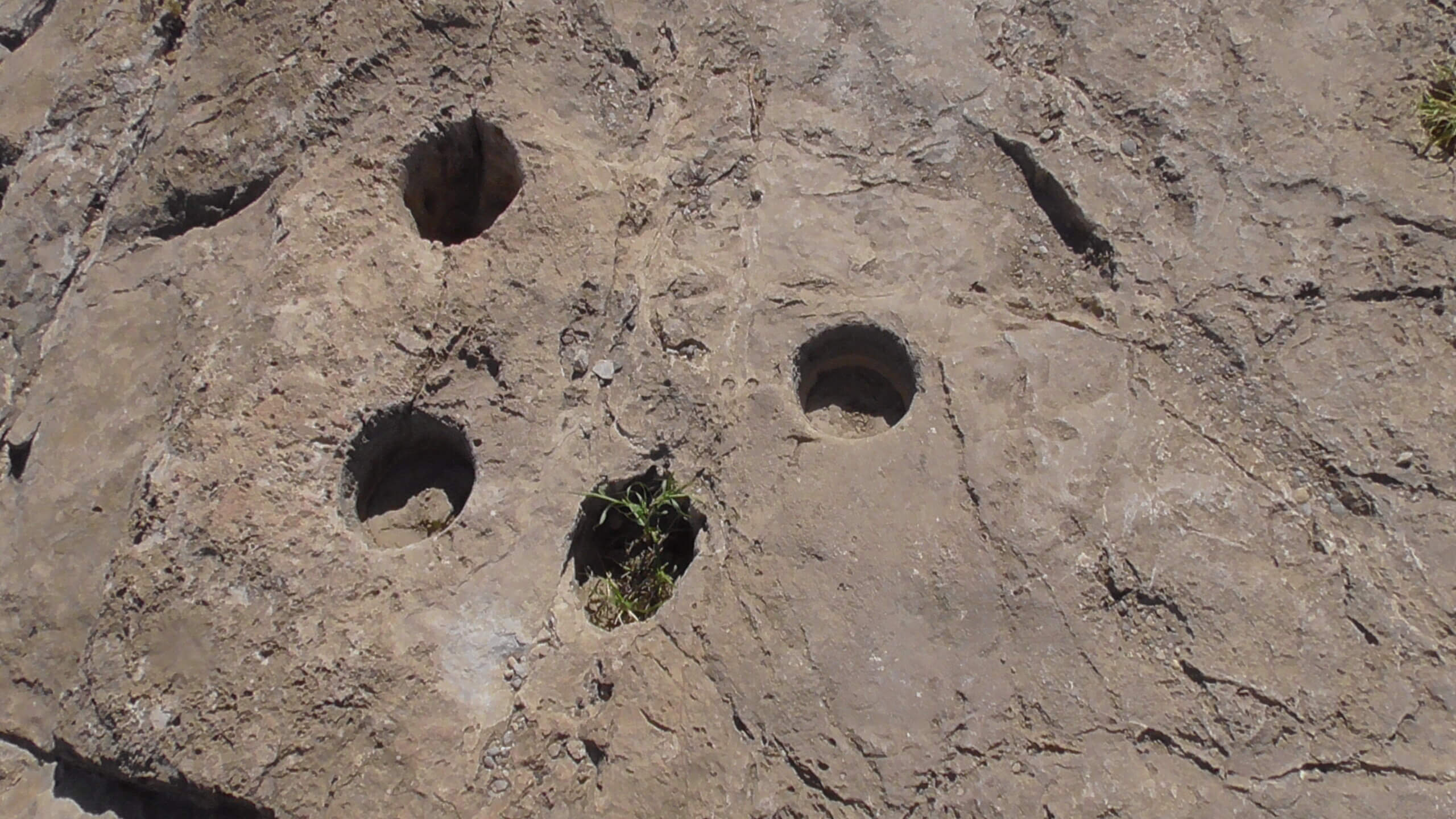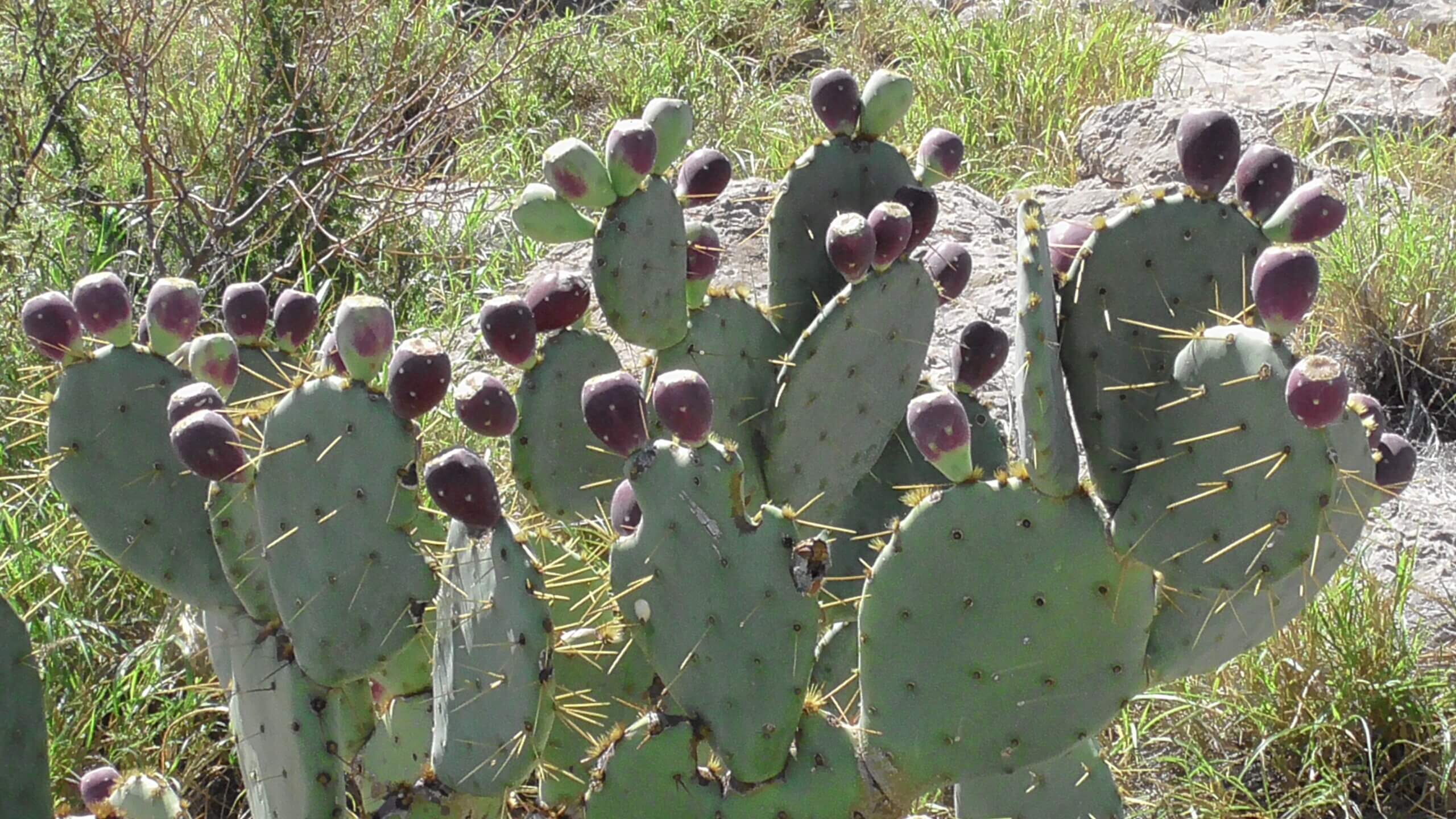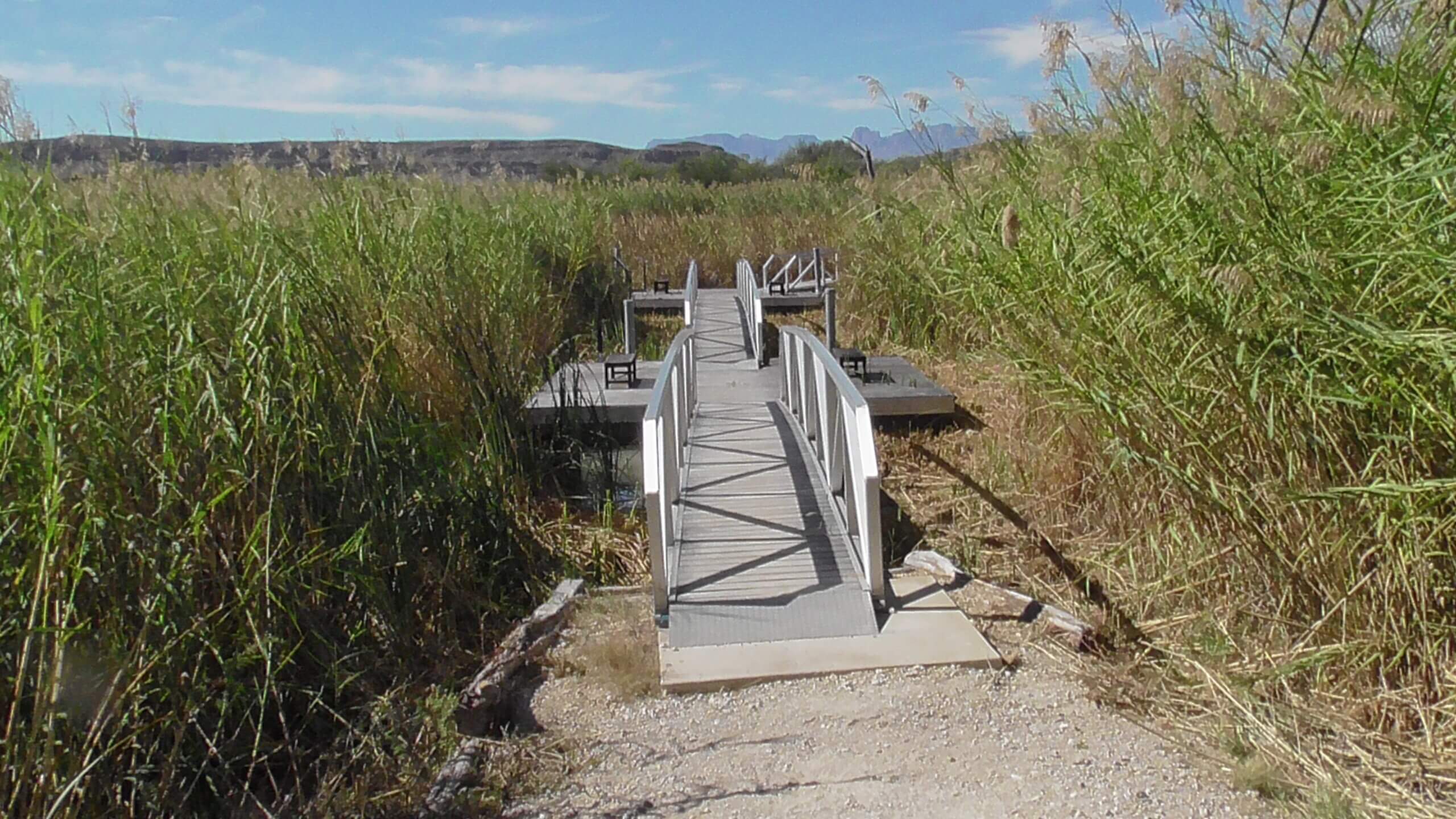Big Bend National Park – East End
Big Bend National Park is 40 miles across by road, remote, and dominated by the Chihuahuan Desert, which gets less than 10 inches of rain a year. The U.S./Mexico border runs for 107 miles along the southern edge of Big Bend National Park.
The park has a surprisingly large biodiversity. e.g. White Sands has one type of Yucca and Big Bend has 5. There are even 3 kinds of Prickly Pear Cactus. The park protects more than 1,200 species of plants (including 60 types of cactus), more than 450 species of birds, 56 species of reptiles, and 75 species of mammals. Although some desert plants, like Mesquite, may grow long roots (> 150 feet) to tap water, most of them have shallow roots. Ocotillo grows tiny leaves when it rains and then drops them.
The park is large enough (over 1,250 sq mi) to support more than two dozen cougars. Other species that inhabit the park include coyote, kangaroo rat, greater roadrunner, golden eagle, gray fox, collared peccary (javelina), black-tailed jackrabbit and even occasional Mexican black bears in the mountain areas. I heard the coyotes yip almost every night where I was staying.
On the eastern end of the park near Boquillas Canyon, the desert turns into a broad marsh on the floodplain, dominated by giant reeds on both sides of the river.
A walk along the Rio Grande leads to the entrance of a magnificent limestone gorge (Boquillas Canyon), that splits the Sierra del Carmen Mountains. The cliffs rise more than a thousand feet above the river in places.
